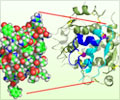
"Our study reveals a key molecular link between bone remodeling and metabolism," said Gerard Karsenty of Columbia University.
"Bone is an organ that has to pay attention to where calories are going. It talks to muscle, fat, the pancreas. It's a player in energy metabolism," added Thomas Clemens of Johns Hopkins University School of Medicine.
And perhaps that makes a lot of sense, Karsenty said. The remodelling of bone relies on two cell types, bone-building osteoblasts and bone-resorbing osteoclasts, making bone the only organ with a cell type that is entirely focused on destroying host tissue.
"On a daily basis, the formation of bone is expensive in terms of energy," he said.
In fact, the idea that the skeleton is much more than a reservoir for calcium and phosphate isn't entirely new, the researchers said. Earlier evidence by Karsenty's group had shown links between bone and the fat hormone leptin. (Obese adults are significantly less likely to develop osteoporosis.)
Advertisement
Karsenty's team describes bone as a multitasker. It has mechanical, hematopoietic (blood-producing) and metabolic functions. It also acts as an endocrine organ through the release of osteocalcin hormone, which favours glucose metabolism when in its active form.
Advertisement
With age, the animals became even fatter and developed more marked high blood sugar accompanied by severe glucose intolerance and insulin resistance. Those symptoms improved with osteocalcin treatment.
Karsenty's group presents independent evidence for the important role of insulin in bone for keeping glucose in check through osteocalcin, in what he refers to as a "feed-forward loop." But his group goes a step further to suggest that bone-resorbing osteoclasts (not just osteoblasts) have a place in this too.
Karsenty explains that bone-building osteoblasts actually control bone resorption by osteoclasts, a process that takes place under very acidic conditions. Those conditions would also favour the chemical modification necessary to produce active osteocalcin, which can escape bone to act as a hormone.
That could be important to those who take osteoporosis drugs designed to block bone resorption, Karsenty suggests.
He said: "It's a red flag. Osteoporotic patients treated with [bone resorption inhibitors] may be at risk of glucose intolerance."
Both studies appear in the July 23 issue of Cell, a Cell Press publication.
Source-ANI











